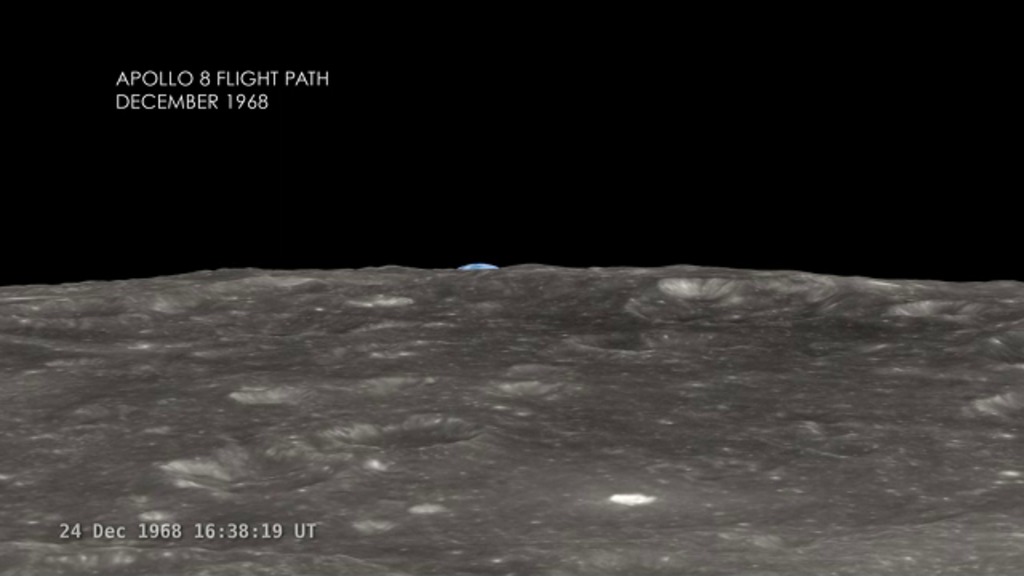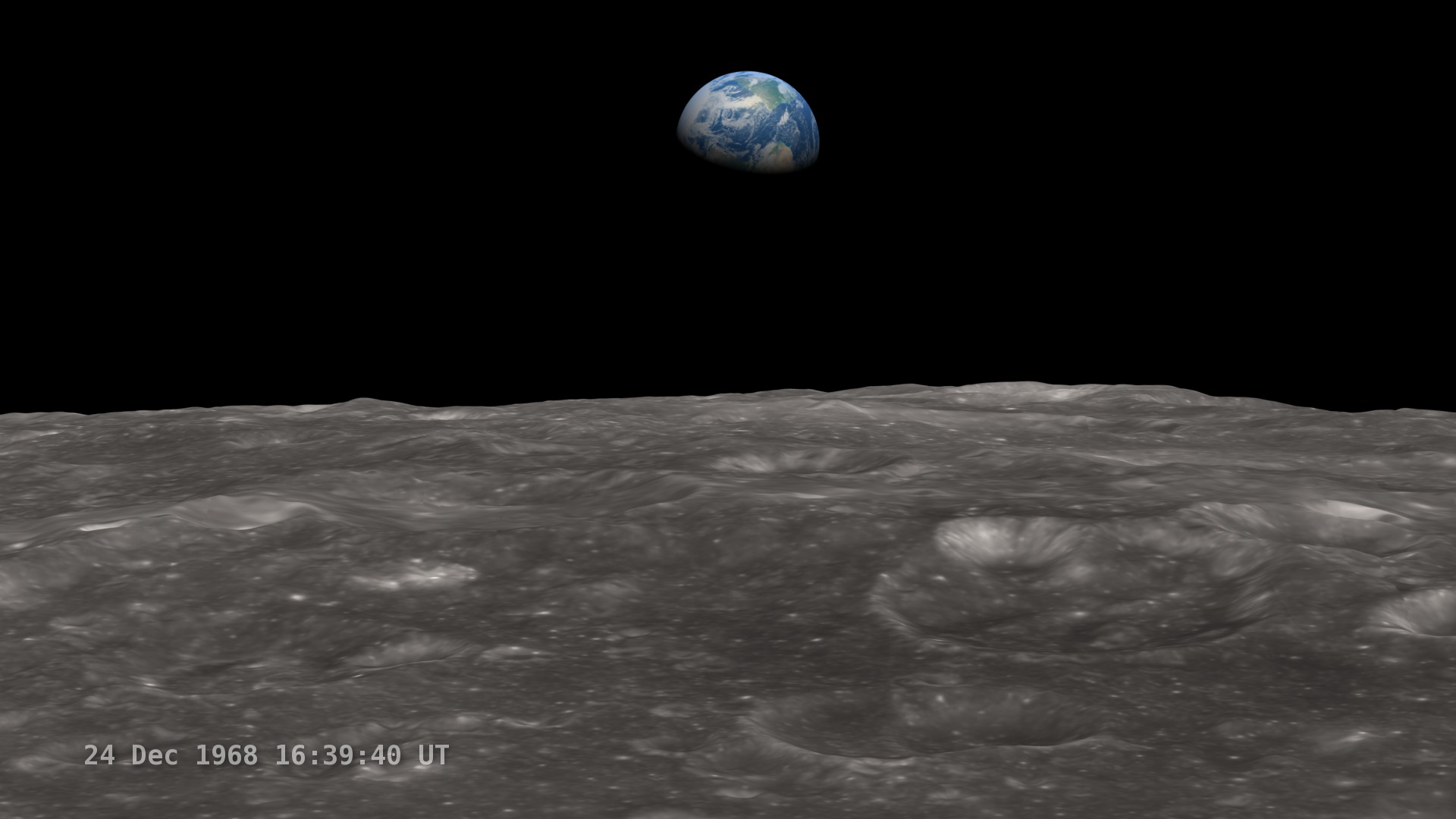Earthrise 2.0
On December 24, 1968, three Apollo astronauts circled the moon, becoming the first humans ever to do so. On their fourth orbit, Apollo 8 Commander Frank Borman interrupted the studies of the moon's cratered terrain to roll the spacecraft, bringing the three main windows around to face the direction of travel. All of a sudden, a bright sliver of light appeared from behind the lunar horizon. Within seconds, a sphere with dazzling white swirls and vivid shades of blue came into view. The astronauts quickly positioned the onboard cameras, first capturing a black-and-white image of Earth rising, and then snapping a color photo of the Blue Planet floating above the horizon. This breathtaking color image would later become known as the iconic Earthrise photograph. The visualization uses data collected by NASA's Terra satellite and Lunar Reconnaissance Orbiter to re-create this historic moment in space exploration.

The iconic photograph from the 1960s with a modern twist.
The visualization pauses to overlay two photos taken by the crew as they watched Earth rise above the moon's horizon.

Capturing Earth's bold vitality and fragility, Earthrise (above) has been called the most influential environmental photo ever taken.

Earth photographed for the first time by a human in lunar orbit. The horizon is shown vertically, which is how it appeared to the Apollo 8 crew.

This map shows the lunar terrain visible in the Apollo 8 color photo (green), black-and-white photo (orange), and areas of overlap (yellow).
For More Information
See NASA.gov
Credits
Please give credit for this item to:
NASA's Goddard Space Flight Center
-
Animator
- Ernie Wright (USRA)
-
Video editor
- Chris Smith (HTSI)
-
Producer
- Chris Smith (HTSI)
-
Scientists
- Richard Vondrak (NASA/GSFC)
- James Rice (NASA/GSFC)
- Noah Petro (NASA/GSFC)
- Gordon Chin (NASA/GSFC)
- John Keller (NASA/GSFC)
-
Writer
- Elizabeth Zubritsky (ADNET Systems, Inc.)
Release date
This page was originally published on Thursday, April 19, 2012.
This page was last updated on Wednesday, May 3, 2023 at 1:53 PM EDT.

